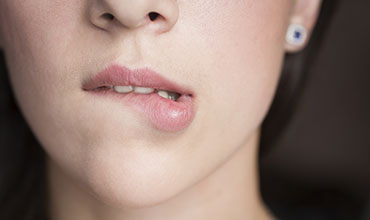
Normally, canines are the last of the front teeth to erupt, appearing when one is 12 or 13. If Reynolds Dentistry finds that these teeth are late to erupt, we may refer the patient to an orthodontist for evaluation. If the orthodontist determines that the canine is in good position for eruption, he may proceed with orthodontics to make space in the arch so the canine can move into position. If the orientation of the impacted canine is improper he will refer the patient to an oral surgeon for evaluation. The problem should be addressed at an early stage, as it becomes more difficult to move the impacted cuspid into position the patient becomes older.
If surgical treatment is necessary it is normally done in the office under IV sedation and local anesthesia. The treatment is administered in one of two ways. A window may be made over the impacted canine by removing the tissue and bone over the tooth. A plastic material is then placed in the window for 3-6 weeks. This material keeps the window open while the tissue heals. The window leaves a path for the impacted canine to erupt. A second technique involves uncovering the canine and cementing an orthodontic bracket with an attached gold chain to the impacted canine. The tissues are then placed back over the canine, with the gold chain attached to the orthodontic arch wire. The orthodontist will then use elastic traction on the chain to move the canine into position.
Since most canines are impacted in the palate, surgery results in minimal facial swelling. Post op discomfort can be easily managed with analgesics. Patients are instructed to avoid biting into foods until the wounds are healed.